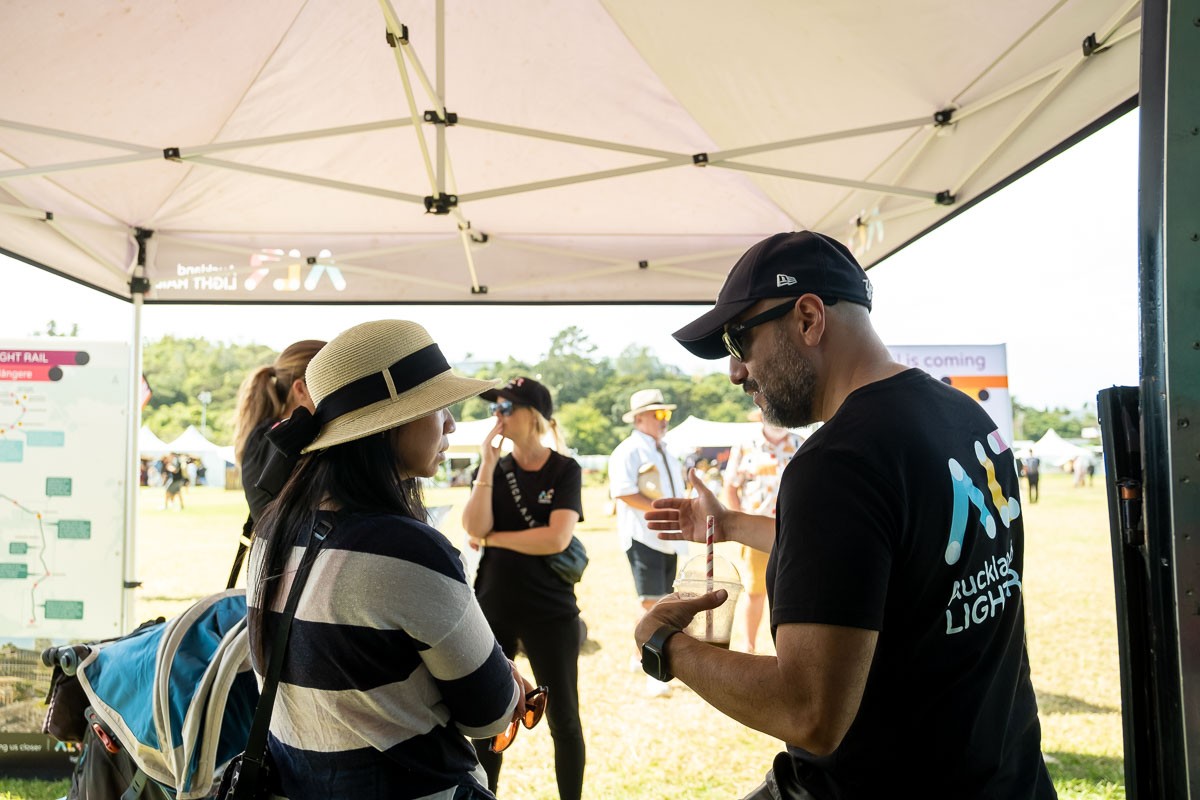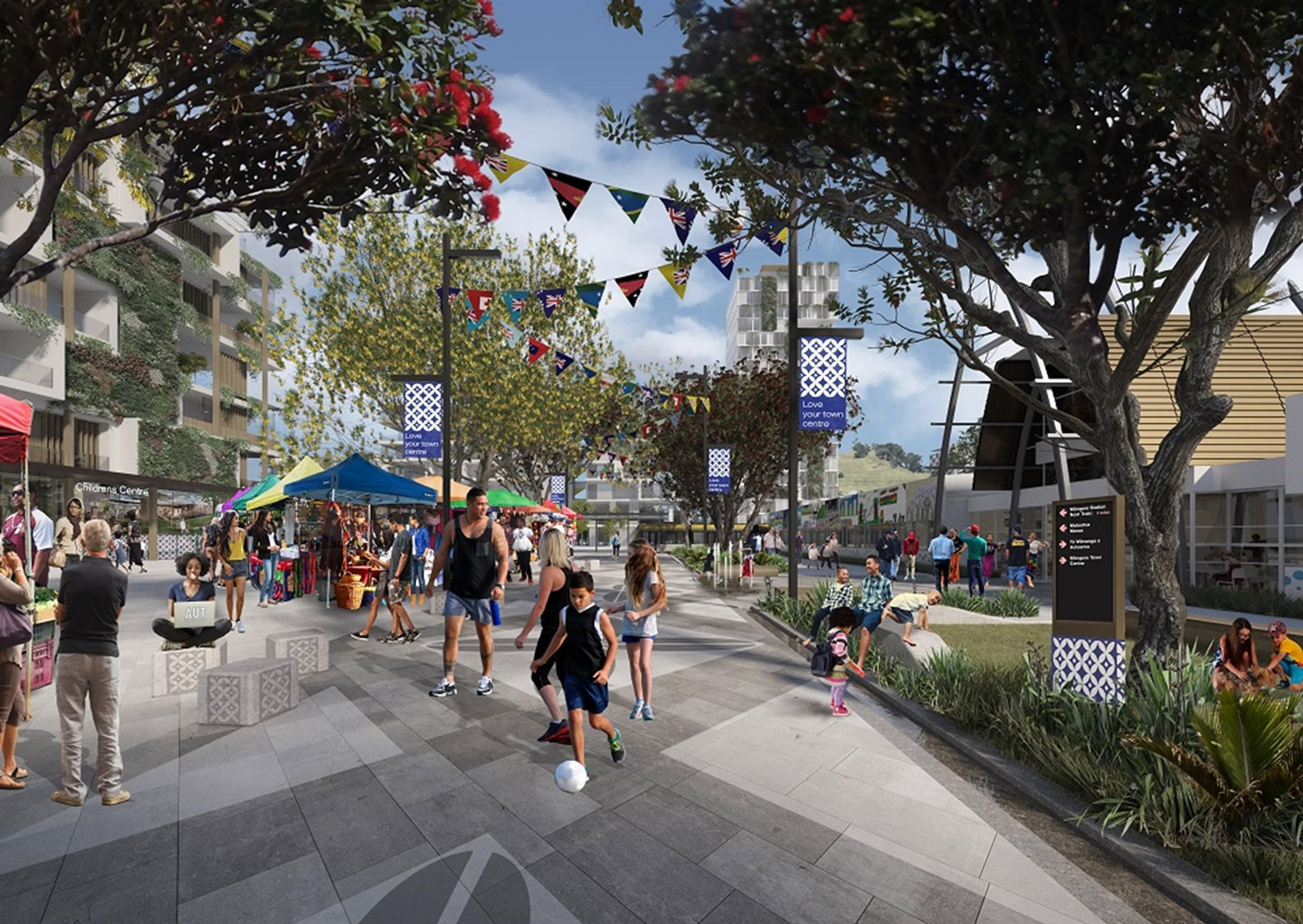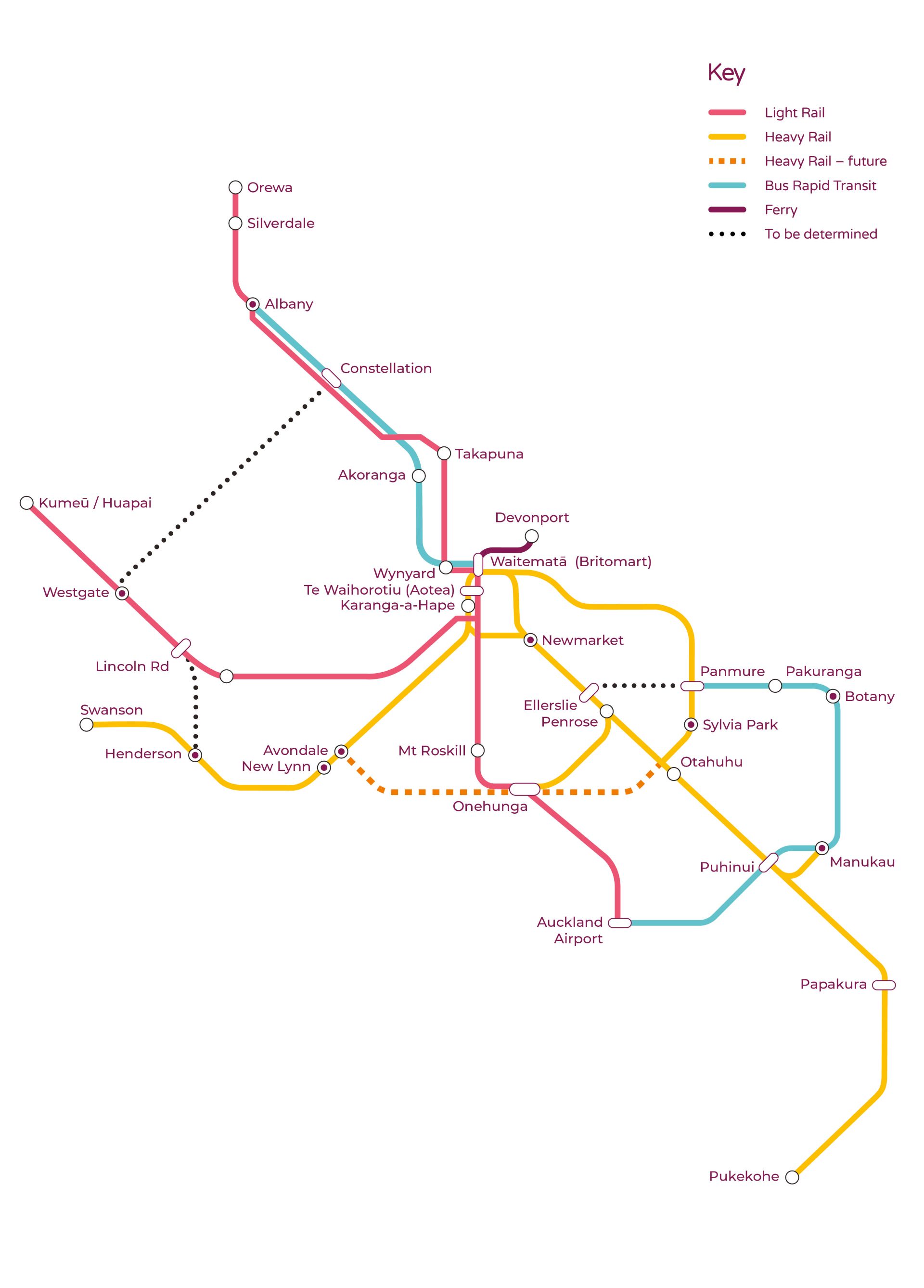Auckland Light Rail project wraps up
The Government has instructed work on the Auckland Light Rail project to stop immediately and for Auckland Light Rail Ltd to be disestablished. We are now taking the steps to do this.
The insights and feedback from our communities and stakeholders helped build our understanding of Auckland’s transport and growth challenges and there is a wealth of knowledge and work we will now be handing over to the Ministry of Transport.
This will be invaluable in developing the next phase of Auckland’s mass rapid transit system, in whatever shape and form the Government decides.
We’re incredibly grateful to everyone who has contributed and provided their support.
Click here to read the proactive release of ALR's Briefing to Incoming Minister 2023.
Auckland Light Rail Limited FY24/25 Annual Report
Click here to read the Auckland Light Rail Limited Annual Report for the 2024/2025 financial year
Auckland Light Rail Limited FY23/24 Annual Report
Click here to read the Auckland Light Rail Limited Annual Report for the 2023/2024 financial year
Auckland Light Rail Limited Statement of Performance Expectations

Great cities have great public transport
Investing in high capacity, quality, rapid transport is critical to developing a modern, connected city. Driving housing and job growth, light rail helps to regenerate neighbourhoods and create people-friendly streets by getting cars off the road.
Aucklanders deserve to have easy, reliable and efficient transport choices and Auckland Light Rail is our opportunity to dramatically expand our rapid transit network to make Tāmaki Makaurau a better place to live now and in the future.

Recent community feedback
Earlier this year we asked for feedback on route options in Onehunga and Māngere.
We received a significant amount of feedback on options in both communities. As well as considering feedback, we also investigated ground conditions and the local environment to find the best route. A combination of all these factors means we propose:
- A light rail only route alongside SH20 and the edge of Onehunga Bay Lagoon – a shorter, more direct route, with less impact on local roads.
- A station near the motorway in Māngere because it offers a more reliable service and faster travel times.
While these are our preferred options, the project’s sponsors – Auckland Council, the Crown and mana whenua – will determine the final route and station locations, based on detailed assessments and recommendations.


Our Engagement in March and April
11 April 2023
Conversations in Māngere
6 April 2023
ALR team at Onehunga Library
28 March 2023
Talking to the Mount Roskill community at Bunnings
26 March 2023
Engaging with parents at Māngere-Otāhuhu Netball Centre
24 March 2023
A step towards
a better future
Light Rail is much more than a transport project. This project could reshape neighbourhoods to work better for us, connect people to work and study and reduce our reliance on cars, helping to reduce emissions.
People and businesses will want to be close to stops or stations, so these areas will grow - creating thriving community hubs, more jobs, and making it easier to ‘live local’.




A solution for
all of Auckland
Building Auckland Light Rail would unlock wider plans to help connect hundreds of thousands of Aucklanders. It would start with light rail from the City Centre to Māngere and integrate with the Waitematā Harbour Connections project which is planning multi-modal transport options across the Waitematā Harbour. Light rail would also be extended to the North West, connecting all the way to Kumeū/Huapai.

Got a question?
Light rail is modern trains/trams that can travel on tracks on existing streets or are separated from other traffic. It can be run at surface, underground in a tunnel or elevated.
Because of its convenience, reliability, safety and comfort, it is a highly attractive rapid transport option. Unlike a bus route, rail is permanent and carries a lot more people. Capable of carrying up to 17,400 passengers per hour at peak it can carry up to four times more passengers than a dedicated busway or trackless trams). The Māngere to City Centre line is equal to 13 new car lanes or taking 14,500 cars off the road.
The City Centre to Māngere line:
- is a 24-kilometre route with up to 18 stations.
- has the capacity to move 17,400 people an hour.
- features a 32-minute reliable travel time from Māngere to the City Centre.
- will run every five minutes (or less), so you can turn up and go.
From the north, light rail will start at Wynyard Quarter traveling underground to Wesley/Mt Roskill. Passengers will board the train at underground stations, with provision for people with different mobility needs - including the elderly, people with prams or people with disabilities.
Tunnelling half the route will deliver strong transport and urban benefits while futureproofing for the future light rail network.
Tunnelling half the route offers:
- Faster journey times (halved to most destinations)
- Double the capacity by being able to run more trains
- More frequent trains (every 5 minutes or less)
- More reliable journey times (separated from other traffic and signals)
- An underground base to connect future lines from the North Shore (Waitematā Connections project) and North West
- Seamless transfers between lines
- Attracts greater urban uplift so more people can live closer to light rail
The exact route of tunnelled sections remains flexible, so the final route through the central isthmus can be explored.
Running at street level in Māngere maximises accessibility and convenience while supporting town centre redevelopment plans and community facilities and urban spaces.
The locations of street level stops are likely to be frequently spaced every 600-800 metres and the location and design can be explored with the community.
The indicative business case estimated a cost of $14.6B for this option.
This is an investment in the future and addressing problems of congestion, sprawl, carbon emissions, and air pollution.
Putting off investment does not necessarily save money. If growth is not facilitated on this corridor, it will need to be supported elsewhere and will likely be more expensive if it occurs at the city fringes.
Congestion alone costs the Auckland economy around $ 1.3billion a year (pre-Covid) which would be $65 billion over 50 years. As Auckland grows to a city of over two million people, these problems will only increase and costs will rise further.